
Arthrodira is an order of extinct armored, jawed fishes of the class Placodermi that flourished in the Devonian period before their sudden extinction, surviving for about 50 million years and penetrating most marine ecological niches. Arthrodires were the largest and most diverse of all groups of placoderms.

Selenosteidae is an extinct family of small to large-sized arthrodire placoderms from the Late Devonian. With the exception of the Chinese Phymosteus, selenosteids lived in shallow seas in what is now Eastern North America, Eastern Europe, and Northeastern Africa.

Draconichthys elegans a selenosteid arthrodire placoderm from the Late Frasnian Kellwasserkalk facies of the Anti-Atlas Mountains of what is now Morocco. During the Late Devonian, the region would have been a shallow, algae-dimmed sea.

Selenosteus brevis is an extinct large selenosteid arthrodire placoderm known from the Famennian Cleveland Shale of Ohio. Scrappy remains from the Frasnian Rhinestreet Shales of Erie County, New York, were attributed by Hussakof and Bryant to this genus in 1919, but, this identification is doubtful. A second species, S. kepleri, was described in 1901, but, not enough differences can be seen between its specimens, and those of the type species to warrant new species status.
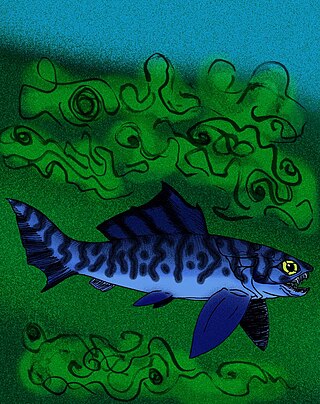
Hadrosteidae is a family of arthrodire placoderms from the Late Devonian. It was originally erected for the late Frasnian Hadrosteus, from the Kellwasserkalk facies. Later, the family was subjectively subsumed into Dinichthyidae due to Hadrosteus' anatomical similarities with Dunkleosteus and Dinichthys. In 1967, Obruchev placed the enigmatic arthrodire incertae sedisDiplognathus, from the Eastern American Famennian, within Hadrosteidae, on the basis of how the two genera have similar denticle ("teeth") patterns of the inferognathals, though, Denison (1978) contests this placement. With the redefining of Dinichthyidae as a monotypic family for Dinichthys, and only a few other genera placed within Dunkleosteidae, Hadrosteidae is now seen as a valid family again.

Stenosteus is an extinct monospecific genus of medium-sized selenosteid arthrodire placoderms of the Late Devonian period known from the Upper Famennian Cleveland Shale of Ohio. Estimated skull lengths range from 6 to 9 centimeters Most fossils of Stenosteus have been scraps of armor and portions of tooth-plates suggestive of Selenosteus. In 1996, enough material of a new species, S. angustopectus, was recovered to allow a reconstruction of armor that resembles that of Selenosteus.
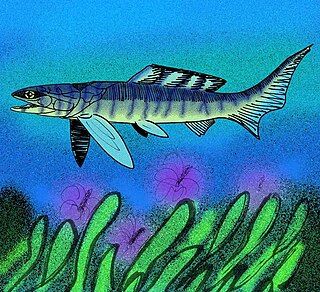
Gymnotrachelus is an extinct monospecific genus of large selenosteid arthrodire placoderm of the Late Devonian known from the Late Famennian Cleveland Shale of Ohio. The type species Gymnotrachelus hydei was originally reconstructed as physically resembling Selenosteus, with slightly smaller orbits. Later specimens led to a reappraisal, and now G. hydei is thought to have a more gar-like or barracuda-like build.

Microsteus is an extinct genus of small selenosteid arthrodire placoderms known from the Upper Frasnian Kellwasserkalk facies of Late Devonian Germany.
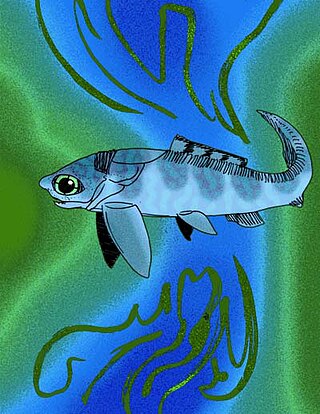
Enseosteus is an extinct genus of small selenosteid arthrodire placoderms known from the Upper Frasnian Kellwasserkalk facies of Late Devonian Germany and Morocco.
Erromenosteus is a genus of extinct, medium-sized brachythoracid arthrodire placoderm from the Late Frasnian of the Kellwasserkalk facies of Late Devonian Bad Wildungen and Bicken, Germany.

Paramylostoma arcualis is an extinct selenosteid arthrodire placoderm from the Late Famennian Cleveland Shale of Late Devonian Ohio. It has a compressed, box-like head and thoracic armor, and large, rounded orbits. However, in comparison with other selenosteids, such as Selenosteus, P. arcualis' orbits were rather small. P. arcualis had smooth jaws that suggest the animal was durophagous.
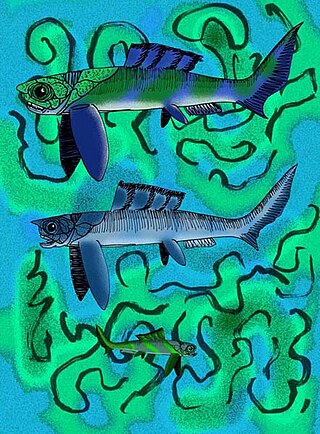
Rhinosteus is an extinct genus of small to medium selenosteid arthrodire placoderms of the Late Devonian known from the Upper Frasnian Kellwasserkalk facies of Bad Wildungen, Germany and Morocco.
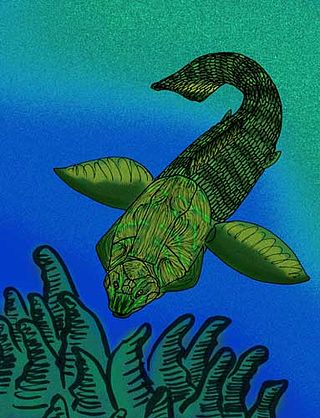
Holonematidae is an extinct family of relatively large arthrodire placoderms from the Early to Late Devonian. Almost all fossil specimens are of armor fragments, though, all have distinctive ornamentation, often of unique arrangements and patterns of tubercles, that are diagnostic of the family. The trunkshield is very elongated, giving the armor an overall "barrel" like appearance.

Tropidosteus curvatus is a large, extinct holonematid arthrodire placoderm from the Givetian-aged Crinoidenmergel stratum of Middle Devonian Rheinland, Germany. T. curvatus is known from primarily from a slender, 42 centimeter long, arched median dorsal plate, where the two sides meet at a sixty to ninety degree angle, which would have given the live animal a humped appearance. The median dorsal plate is very similar to the median dorsal plates of Rhenonema and Belemnacanthus, and is the primary reason for T. curvatus' placement within Holonematidae. After stating this reason, Denison, 1978, then questions Tropidosteus' placement within the family, noting that the dorsal plate lacks ridged ornamentation, which is a key diagnostic trait of the family. The ornamentation otherwise consists of an external covering of small tubercles.
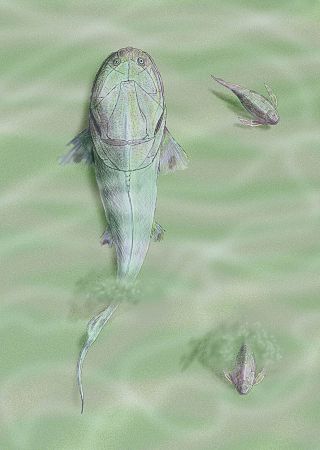
Homostiidae is a family of flattened arthrodire placoderms from the Early to Middle Devonian. Fossils appear in various strata in Europe, Russia, Morocco, Australia, Canada and Greenland.
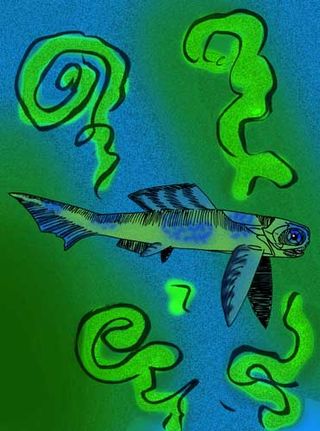
Walterosteus is an extinct genus of small selenosteid arthrodire placoderms known from the Upper Frasnian Kellwasserkalk facies of Late Devonian Germany and Morocco.
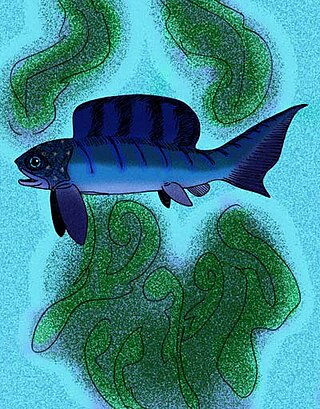
Synauchenia coalescens is a trout-sized, highly compressed arthrodire placoderm restricted to the Late Frasnian-aged Kellwasserkalk Fauna of Bad Wildungen.
Phymosteus liui is an extinct large selenosteid arthrodire placoderm known from the Lower Famennian Xiejingshi Formation of Shimen County, Hunan province, in central China.

Bulongosteus liui is an extinct genus of selenosteid arthrodire placoderm from the Early Famennian upper Zhulumute Formation of what is now the Junggar Basin of Xinjiang. It is the first arthrodire known from the region and the first aspinothoracid arthrodire known from continental strata. It lived in a braided river environment, and is believed to be euryhaline.

Tityosteus is an extinct genus of homostiid arthrodire from the Early Emsian of the Early Devonian, with fossils known from Germany, the Ibero-Armorican Trough, and southern Siberia. It attained a length of 2.5 meters.


























